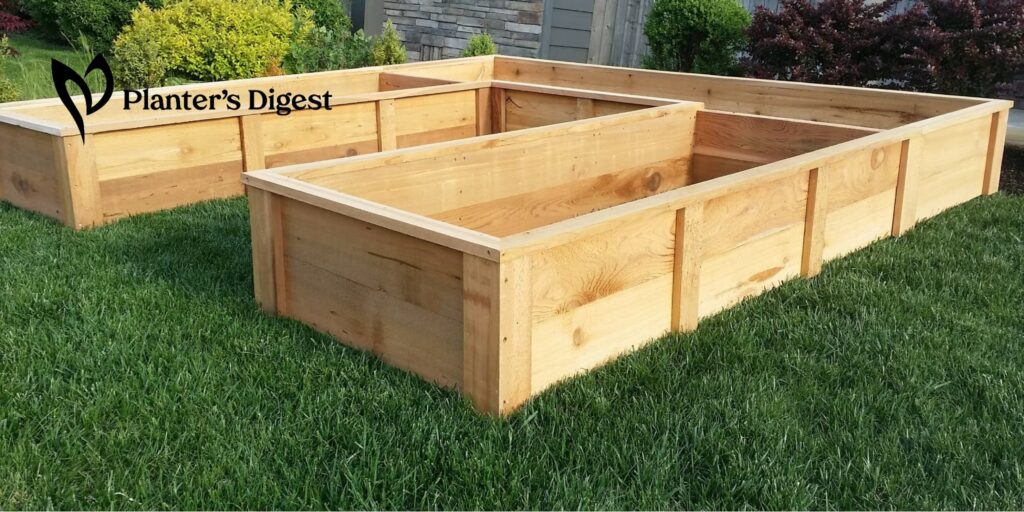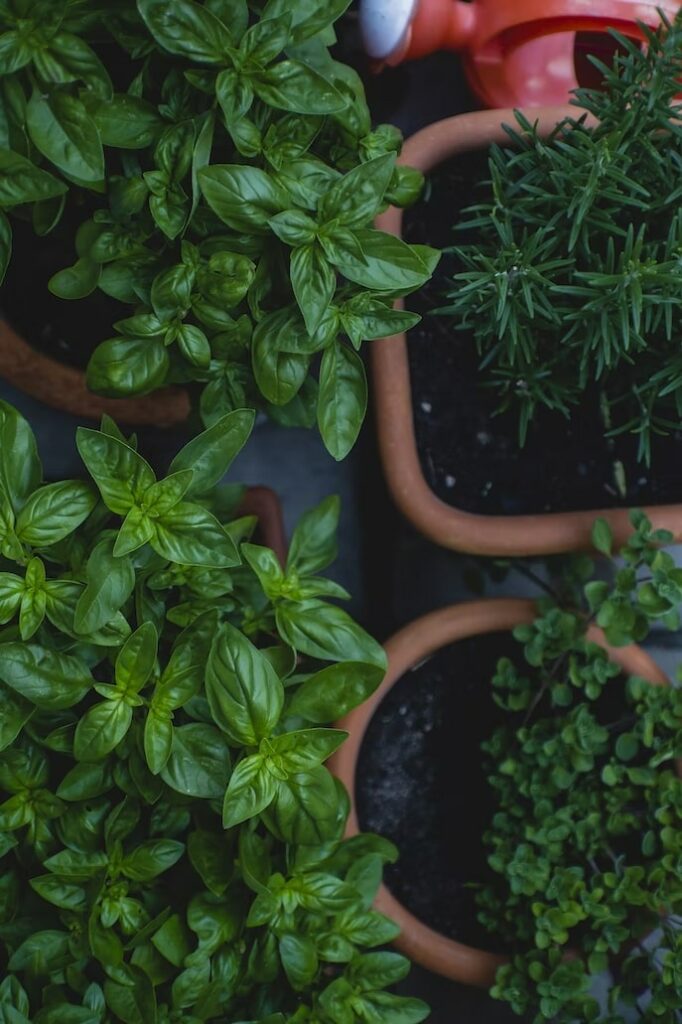Raised garden beds are a trend embraced by seasoned gardeners and newcomers alike. But the question is, should you join in?
Liners do have several benefits, such as weed control, moisture retention, and protection against soil erosion. Yet, keep in mind potential downsides like drainage issues and restricted root growth.
But is this approach right for you?
Determining whether to use a liner depends on your garden’s unique requirements, and by the time you’ve gone through this article, you’ll have a better grasp of understanding if lining a raised garden bed is for you or not!
Benefits of Lining a Raised Garden Bed
Insulates Soil for Temperature Stability in Raised Beds
Temperature fluctuations can significantly impact the health of your plants in raised beds due to their elevated nature. Unlike ground soil, the soil in raised beds is more susceptible to rapid heat gain and loss.
To mitigate this, employing a liner within your raised bed proves beneficial. This liner acts as a barrier against extreme temperature changes, safeguarding your plants from excessive cold or heat exposure.
By harnessing the daytime sun’s warmth, the liner preserves the soil’s temperature during chilly nights or late spring frosts. In some cases, for added protection, consider using a cloche or row cover to shield stems and leaves.
Plus, the liner curbs the swift heating of the soil on hot, sunny days, effectively slowing down moisture evaporation in the summer.
Guards against Garden Pests in Raised Beds
Raised beds can act as a natural deterrent to many pests, yet they might not be foolproof against moles, gophers, or other burrowing critters if they lack a bottom.
To counter this, introducing a liner to cover the bed’s base proves effective in preventing these pests from infiltrating your garden from below.
When adequately installed along the bed’s bottom and sides, the liner thwarts the attempts of moles and gophers to breach it. Even if they were to try, the barrier would likely dissuade them, encouraging them to seek easier grounds for digging.
A mere plastic sheet might not withstand the persistence of these creatures; a more durable liner material, like metal hardware cloth, is advised.
Weed Suppression for a Weed-Free Garden
When you’re starting a new raised bed or thinking about one, don’t overlook the issue of weeds cropping up from beneath. Imagine setting up your raised bed in a chosen spot.
Beneath it, there are dormant weed seeds just waiting to sprout and invade your bed. This concern grows even more if your raised bed lacks a bottom.
But there’s a great solution – the raised garden bed liner. It acts like a shield that stops those weeds in their tracks.
These liners, made from sturdy plastic or cloth, create a barrier that most weeds can’t easily break through. Of course, there’s always a chance that weed seeds might find their way in through the wind, birds, or other critters.
You can have greater peace of mind when using a liner under this circumstance. It significantly lowers the odds of them thriving and taking over your beautiful bed.
Preserves Soil Integrity and Prevents Leaching
A raised bed without a bottom can face soil erosion when you water or when it rains. This erosion slowly wears away the bed’s natural materials and nutrients, which can negatively affect your plants.
To steer clear of this issue, we recommend using an appropriate liner. This liner should enable water to drain away without carrying soil along.
Gong for a liner crafted from materials that allow passage, will aid in drainage while preserving the bed’s nutrients. This becomes even more crucial if your soil doesn’t have good drainage.
Enhancing drainage is also achievable by mixing compost into your soil. One advantage of raised beds is that they naturally drain more efficiently than soil at ground level.
Curtails Chemical Leaching into Soil
When it comes to your garden materials, choices matter. Natural materials like untreated wood, brick, or stone won’t give you trouble.
But be cautious with pressure-treated wood or pallets of uncertain origin. They might release unwanted chemicals into the soil and harm your plants.
Here’s the deal: When these kinds of wood touch the soil, those chemicals can move in. To tackle this, go for a liner – plastic works great. It forms a shield against any leaching.
Drainage worries? Team up cloth or another breathable material at the bottom with plastic on the sides. This way, you ensure good drainage without putting your soil at risk from aging wood’s potential toxins.
Disadvantages of Lining a Raised Garden Bed
Possible Drainage Concerns
Going for plastic liners that don’t allow water to pass through might pose drainage issues for your raised bed. This can result in holding too much moisture, especially during chilly, rainy periods.
Tragically, excessively damp soil can eventually trigger root rot in your plants. If ensuring effective drainage for your raised garden bed is a top concern, it could be wise to rethink the use of plastic liners.
Vulnerability to Damage during Digging
When you’re tending to your garden, there’s a good chance you’ll need to do some digging in your raised bed, which can affect how long your liners last.
Strong liners can handle the impact of digging without a problem. However, thin plastic liners or older pool covers might get punctured from sharp or even blunt tools like shovels or trowels.
Liner Replacement Challenges
Replacing a liner requires removing all the soil, taking out the old liner, installing the new liner, and then refilling with soil. This process can be quite labor-intensive, especially if you have multiple raised beds.
To lessen this challenge, plan ahead. Match the expected lifespan of your raised bed with the liner material.
High Risk of Accelerated Wood Rot
When you add plastic liners over the wood, it can accidentally trap moisture, which speeds up the deterioration process. To make sure your raised bed remains durable over time, think about using wood that naturally resists decay.
Consider woods like cedar or treatments that safeguard the wood, like juniper or whey-based solutions.
What do you use to line a raised garden bed?
When it comes to lining your raised bed, you’ve got a handful of simple choices: fabric, plastic, metal, and paper or cardboard are all solid options. Picking the perfect liner for your raised garden bed also boils down to a few things.
Consider the type of soil you’ve got, what your raised bed is made of, how much maintenance you’re up for, the pests hanging around your yard, and, of course, your budget.
Landscape Fabric
Landscape fabric does a great job of keeping those pesky weeds at bay. The secret? Blocking out the sunlight that weeds need for their growth.
You’ll find this fabric available at most garden stores or online, particularly the black polypropylene variety as it’s very popular and accessible.
You can also use it as a liner for your raised beds and planters. This material allows for some air, water, and nutrients to pass through, making your plants healthy and happy.
When you use it to line your raised beds, landscape fabric promotes proper water drainage and fends off persistent weeds. If you’re looking to ensure good drainage for your raised beds, landscape fabric is an excellent option to consider.
Just note that it might not stand up to the challenge posed by gophers and moles. These critters could easily chew or scratch through it without breaking a sweat.
Canvas
Canvas is a strong material derived from cotton, linen, or hemp. It’s commonly used in various applications such as shoes, awnings, and tents.
Its durability and versatility extend to use as a liner for grow bags and raised garden beds. Canvas, also utilized in gardening, is a hardy option for raised bed liners.
Canvas outlasts most landscape fabrics and allows for decent drainage when used as a liner. If you seek both efficient drainage and protection against gophers and moles, canvas is your best bet.
Alternatively, consider burlap, made from jute, flax, or hemp, which serves as an adequate raised bed liner.
Plastic Garden Liner
A plastic garden liner is ideal if waterproofing your raised bed is your priority. You can utilize a plastic tarp or an old pool cover as a liner.
However, keep in mind that these materials are waterproof and impede drainage unless you incorporate drainage holes.
For the best results, line the sides of a raised bed constructed from older wood with plastic, and use a water-permeable material like canvas for the bottom.
This dual-liner setup ensures both drainage and protection from chemicals in pressure-treated wood. Alternatively, order polypropylene fabric plastic garden liners for improved drainage.
If concerns about plastic toxicity arise, consult the manufacturer or restrict plastic use to flower bed liners. Plastic excels as a raised garden bed liner in arid conditions when moisture retention is essential.
Hardware Cloth
Hardware cloth, a metal mesh often sold in rolls at hardware stores, is a sturdy option to line the bottom of your raised bed and deter gophers and moles from below. Some hardware cloth is treated to resist rust or tarnish.
For a nontoxic garden bed liner, choose untreated stainless steel hardware cloth. When combined with canvas or landscape fabric, hardware cloth prevents pests from invading your garden while allowing water to drain without washing away soil.
Placing hardware cloth above a waterproof liner discourages pests from creating holes. It’s your top choice if your priority is keeping moles and gophers out while ensuring adequate drainage.
Hardware cloth also welcomes earthworms, which contribute to soil aeration. It can be used in combination with other liners as needed, but you can also consider stainless steel gopher wire as a similar alternative for pest control.
Weed Fabric
While weed fabric can serve as a raised garden bed liner, it’s not the best choice for deep-rooted plants like tomatoes. For such plants, go for a deeper bed to accommodate their root growth.
Coco Liner
If you’re on a budget and require a high-quality liner, organic coco liners are an excellent choice. They’re great for both small and large garden areas, offering safe, chemical-free support.
Organic coco coir is particularly great for delicate plants like microgreens, which grow rapidly and require a reliable liner. Look for liners with a minimum thickness of a quarter of an inch and consider using multiple layers for added reinforcement.
Organic coco liners are easy to trim and reshape while being environmentally friendly. They’re available in large rolls, making them an ideal grass liner for raised garden beds.
Cardboard or Paper
While cardboard or paper can be used as raised bed liners, be aware that they decompose quickly. Flattened cardboard boxes can serve as economical raised bed liners.
Go for non-toxic options like weed barrier papers, and Organic Materials Review Institute (OMRI) listed for organic use. These papers prevent weeds for up to 90 days and biodegrade, enriching the soil with nutrients.
When should you add a liner for your raised garden bed?
Selecting the optimal moment to include a liner in your raised garden bed can help make your gardening successful. Although a one-size-fits-all solution doesn’t exist, there are some factors that can assist you in navigating this decision-making journey.
Starting Fresh
If you’re putting together a freshly raised garden bed, we suggest adding the liner while you’re assembling the bed itself. This way, you’ll ensure the liner fits nicely and is firmly set before you begin adding soil and plants.
Considering the Climate
Stop and consider the climate and weather patterns in your local area. If you live in an area where rain is frequent or there’s high humidity, using a liner can be really useful.
It can help prevent issues like waterlogging and root rot. On the flip side, if your area generally lacks moisture, a liner can be a helpful tool for retaining the vital moisture your plants need.
Tackling Weeds
If keeping weeds under control is a top concern for you, your best approach is to lay down the liner before adding the soil. We find that this works well to limit weed growth and reduces the need for constant upkeep.
Thinking Long-Term
Consider the reasons behind your raised garden bed. If you’re tending to perennial plants or intending to utilize the bed over various growing seasons, adding a liner can enhance its long-term durability and eco-friendly factor.
Matching Plant Needs
The specific plants you’re aiming to grow also play a significant role. Some plants thrive in well-draining setups, while others demand consistent moisture.
Make your decision based on what your chosen plant varieties truly need.
Considering the Variety of Liners
Different materials for liners offer distinct advantages. If you go for plastic liners, double-check that they come with proper drainage holes to avoid water buildup.
Landscape fabric liners can be added during the bed’s assembly to effectively prevent weed growth.
Budget and Resource Considerations
Keep your budget and available resources in mind. While liners can offer benefits, they might contribute to the overall cost of your gardening project.
Upgrading Existing Beds
If you have established raised beds without liners and run into issues like excess moisture or persistent weed challenges, don’t worry. You can still introduce a liner. Carefully lift the existing plants, incorporate the liner, and then replant them.
When should you avoid using a liner for your raised garden bed?
While the practice of using a liner is widespread, there are situations where it’s wise to forgo this approach and let your garden bed flourish naturally. Here’s a quick list of factors to consider whether a liner for your raised garden bed is the right choice.
Prioritizing Well-Drained Soil
If your garden bed boasts excellent natural drainage, applying a liner could result in water pooling and potential root rot. In such cases, the liner might inadvertently hinder proper water flow rather than aiding it.
Cultivating Native Plants
If you’re growing native plants, you might not need an extra liner. These are naturally adapted to your local environment and usually draw their nutrients directly from the soil.
Addressing Wood Rot Concerns
Think about opting for durable materials like cedar or redwood when putting up your raised beds. Cedar and redwood possess natural strength, allowing them to endure moisture with ease as time passes.
Encouraging Soil Enhancement
If you want to create a balanced ecosystem in your garden bed, consider skipping the use of a liner altogether. This will encourage the growth of helpful soil organisms and support natural interactions.
Championing Sustainable Gardening
Plastic liners, in particular, can contribute to waste over time and might not align with your sustainable gardening approach. You can still go with cardboard or paper to stay eco-friendly, but they’re not as durable and will require upkeep.
Going for a Minimalist Approach
If you’re looking to maintain a garden that’s relatively easy to maintain, reconsider the use of a liner. Although it might appear appealing, having a liner in a raised garden bed can actually bring about unnecessary complications.
Being Mindful of Budget Constraints
Different qualities and lengths of liners have an effect on the overall cost of raised beds. If you’re working with a tight budget, skipping liners for your raised beds is a sensible choice.
By not using liners, you can direct your funds toward other essential gardening needs without sacrificing practicality.





